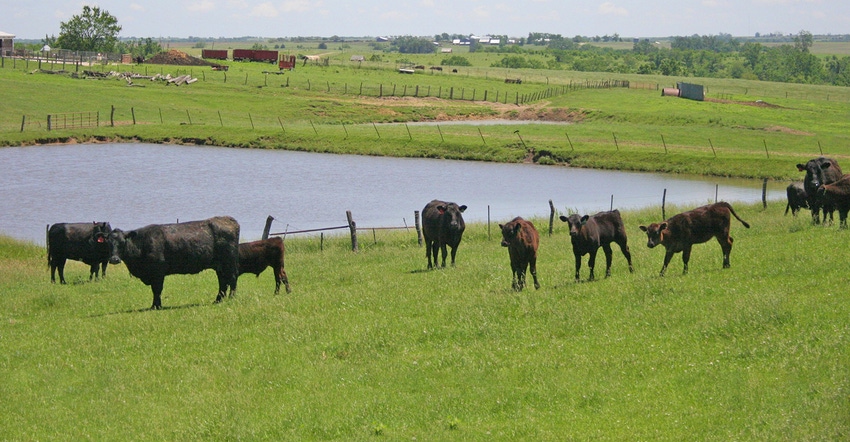
The Missouri Department of Natural Resources is lifting restrictions on three of its conservation practices during the 2018 drought.
Colleen Meredith, Conservation Program director at Missouri DNR, says the Soil and Water Districts Commission, appointed by the governor, began opening conservation practice exclusions to help farmers and ranchers during the drought. “The commission realized back in June that it was getting dry, and they needed to start making changes before it was too late,” she says.
The group agreed to lifting restrictions in three areas:
• Ponds. Farmers can clean out ponds. Ponds in the conservation program are built for erosion control. “They are made to catch sediment, so they will fill up over the lifetime of the practice.” But that makes for less water holding capacity, she explains. Farmers can now clean out sediment in ponds to increase water-holding capacity. Meredith says removing this restriction will increase water supplies on farms and ranches.
Farmers can receive up to $1,000 per half-acre of pond to help remove sediment. The maximum is $4,000, no matter the pond size, she says. A 10-year maintenance commitment for the pond will be reinstated from the date of payment.
• Livestock. Grazing is now allowed. In June the commission agreed that any conservation practices requiring livestock seclusion, like buffer woodlands, should be removed. “Now livestock can graze those areas,” Meredith says. Initially, grazing was allowed until Sept. 1. However, at the last commission meeting, grazing was extended to Dec. 1 for counties in severe drought. “That is to just make any forage worth anything available for use,” she adds.
• Grazing. The commission agreed to defer the grazing school requirement for 12 months after contract approval for water development and water distribution grazing system practices. The water development contracts consist only of pipeline from the water source and one watering tank. The rest of the system can be designed and installed after the landowner has completed an approved grazing school.
Meredith says farmers and ranchers should contact their local soil and water conservation district for more information. They can find a list at mosoilandwater.land. For additional drought resources visit Missouri DNR.
About the Author(s)
You May Also Like






